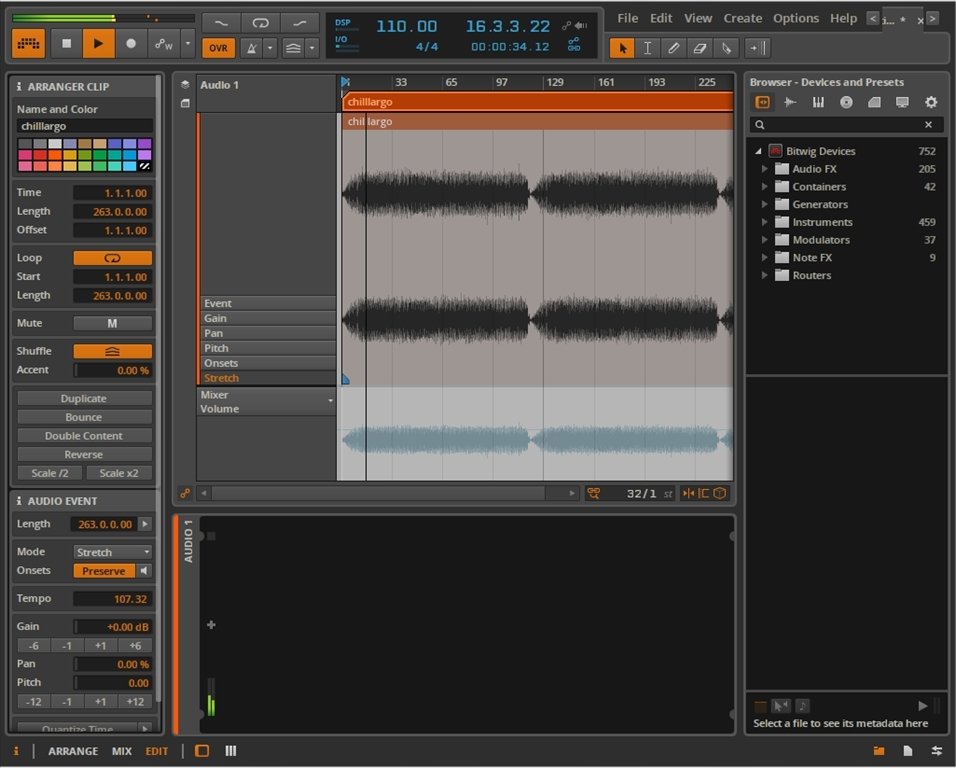

As well as Hertz, you can enter note names (C1, F#2, A4, etc). To enter any parameter value numerically, Cmd+click the parameter in question. There’s also the option to drop items between or behind the present Project tabs, creating a new Project containing only that content. Just drag your content to a Project tab, hover there for a second to switch the focus to that project, then drop your selection in. But the Project tabs at the top of the Bitwig window allow you to drag and drop any item between Projects, be it a drum kit, a specific device chain, a little melody clip, or a complete vocal group.

Getting stuff from one Bitwig Studio project to another can be a slow process, and usually involves saving device presets, rendering stems and hating the clipboard for losing content on the way. With so much variation down to tiny changes in just a few parameters, the Oscillator Blend modes are ripe for creative experimentation. Octave and Pitch are also influential on the results of oscillator blending. The amount of distortion introduced by the blending is dependent on the shape of the two oscillators’ source waveforms, and each of the Blend modes can sound very different depending on the oscillator signals. Polysynth’s Oscillator Blend modes might seem complicated and unfathomable to the uninitiated, but they provide flexible options for combining the waveforms of two oscillators into a more complex signal. Use it as an advanced mixdown tool within an EQ, to make an external signal duck a specific frequency range or as a crazy sound design tool, modulating parameters of your Polysynth with the amplitude of a drum loop, for example. It turns the amplitude of the incoming signal into a modulation source, ready to be assigned to any parameter. For infinitely more creative sidechaining, though, take a look at the Audio Sidechain Modulator, which has additional settings to adjust and filter the incoming sidechain signal to your requirements. Some Bitwig devices can accept sidechain audio signals from anywhere in your project. This works for any type of device in the chain, including nested devices and even modulator settings. If this is the case in your project, right-click a parameter to copy its value to all ‘sibling’ instruments in the setup, making working with multiple devices much quicker and easier. When setting up a drum kit in Bitwig’s Drum Machine, you may often find yourself using the same device in multiple slots - most often Samplers, especially when you’ve sliced an audio clip into Drum Machine automatically. It’s context-sensitive, too, with content filters related to the place it’s launched from, and you can further customise the filters for each context: after setting it up the way you want, just right-click anywhere in the Pop-up Browser and select Remember selected filters when… 2. Custom browser filtersīitwig’s Pop-up Browser (opened by clicking any + icon) makes auditioning and selecting devices, presets, plugins and samples fast and intuitive. If you want to beef-up your Bitwig knowledge, read on.


 0 kommentar(er)
0 kommentar(er)
